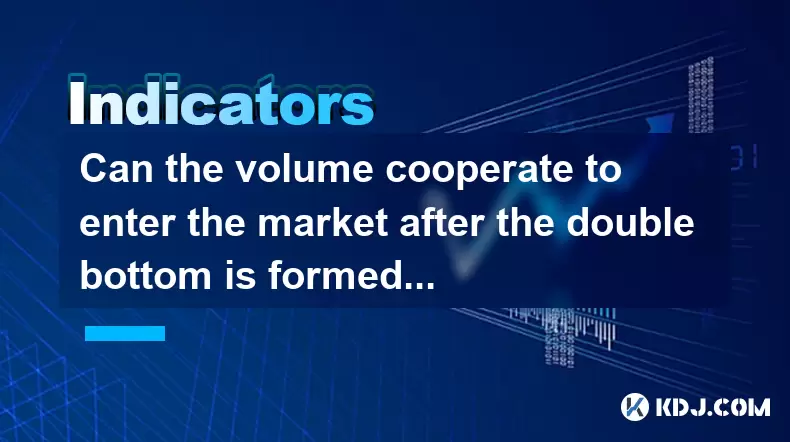-
 Bitcoin
Bitcoin $108,092.5658
-0.99% -
 Ethereum
Ethereum $2,546.4530
-1.12% -
 Tether USDt
Tether USDt $1.0000
0.01% -
 XRP
XRP $2.2676
0.12% -
 BNB
BNB $659.1616
-0.30% -
 Solana
Solana $148.8297
-1.97% -
 USDC
USDC $1.0000
0.02% -
 TRON
TRON $0.2874
-0.30% -
 Dogecoin
Dogecoin $0.1676
-3.64% -
 Cardano
Cardano $0.5765
-1.73% -
 Hyperliquid
Hyperliquid $37.2069
-6.18% -
 Bitcoin Cash
Bitcoin Cash $497.9918
-0.10% -
 Sui
Sui $2.8427
-2.26% -
 Chainlink
Chainlink $13.2689
-2.06% -
 UNUS SED LEO
UNUS SED LEO $9.0541
0.15% -
 Stellar
Stellar $0.2487
-0.92% -
 Avalanche
Avalanche $17.7710
-3.09% -
 Shiba Inu
Shiba Inu $0.0...01167
-1.28% -
 Toncoin
Toncoin $2.7488
-2.80% -
 Hedera
Hedera $0.1559
-2.28% -
 Litecoin
Litecoin $85.8945
-2.48% -
 Monero
Monero $316.0985
-2.09% -
 Dai
Dai $1.0001
0.02% -
 Polkadot
Polkadot $3.3481
-1.83% -
 Ethena USDe
Ethena USDe $1.0000
0.00% -
 Bitget Token
Bitget Token $4.2910
-3.04% -
 Uniswap
Uniswap $7.4131
-0.09% -
 Aave
Aave $280.9266
-2.67% -
 Pepe
Pepe $0.0...09816
-3.18% -
 Pi
Pi $0.4557
-2.29%
Can the volume cooperate to enter the market after the double bottom is formed in the time-sharing chart?
Jun 30, 2025 at 10:29 am

Understanding the Double Bottom Pattern in Time-Sharing Charts
The double bottom pattern is a commonly observed technical analysis formation that signals a potential reversal from a downtrend to an uptrend. In time-sharing charts, which display price movements within specific intervals (e.g., 1-minute, 5-minute, or 15-minute charts), this pattern typically appears as two distinct lows at approximately the same price level with a moderate peak in between.
In this context, traders often ask whether volume can be used effectively to confirm the validity of the pattern and support a market entry decision. The double bottom itself suggests weakening bearish momentum and emerging bullish strength. However, volume plays a critical role in validating this reversal signal and should not be overlooked when analyzing time-sharing charts.
Volume confirmation increases the reliability of the double bottom pattern by showing increased buying pressure during the second bounce.
The Role of Volume in Confirming Reversals
Volume acts as a supporting indicator in technical analysis, especially when evaluating chart patterns like the double bottom. When the first bottom forms, it's common to see high selling volume due to continued bearish sentiment. As the price rebounds slightly, volume tends to decrease. The second drop toward the previous low usually occurs on lower volume, indicating that sellers are losing conviction.
When the price begins to rise again after forming the second bottom, a noticeable increase in volume confirms that buyers are stepping in aggressively. This is particularly important in time-sharing charts where short-term fluctuations can create misleading signals.
- First bottom: High volume indicates strong selling pressure.
- Rebound: Lower volume shows reduced interest from buyers.
- Second bottom: Declining volume implies fewer sellers remain.
- Breakout: Rising volume supports a genuine reversal and validates the double bottom pattern.
How to Use Volume for Market Entry After a Double Bottom
Once the double bottom has formed and the price rises above the intermediate peak (neckline), traders may consider entering long positions. However, without volume confirmation, such entries can be risky. To reduce false breakouts, traders should wait for the following conditions:
- Price breaks above the neckline resistance: This is the key trigger for a potential long entry.
- Accompanied by a surge in volume: A significant increase in volume during the breakout confirms institutional or large trader participation.
- Retest of the neckline: Sometimes the price revisits the breakout level before continuing higher. If this retest occurs on low volume, it reinforces the strength of the new uptrend.
It’s also crucial to set stop-loss orders below the second bottom to manage risk. Traders who ignore volume might find themselves caught in fakeouts, especially in volatile time-sharing charts where sudden spikes can distort the real market direction.
Practical Example: Analyzing a Double Bottom with Volume in Time-Sharing Charts
Consider a scenario on a 5-minute BTC/USDT chart. Over the course of an hour, Bitcoin forms two clear bottoms around $60,000, separated by a small rally peaking at $60,200. During the first decline to $60,000, volume spikes significantly, suggesting heavy selling. The subsequent rebound sees modest volume, indicating limited buying interest.
As the price drops again toward $60,000, volume remains subdued, signaling that bears are losing control. Finally, when the price breaks above $60,200, there is a visible spike in volume, confirming that bulls have taken over.
In this case:
- Entering a long position just above $60,200 becomes valid.
- A stop-loss can be placed at $59,800 to limit downside risk.
- Take-profit levels can be calculated based on the depth of the double bottom (approximately $200), projecting a target of $60,400 or higher.
This example illustrates how volume works hand-in-hand with the double bottom structure to offer more reliable trading signals in fast-moving time-sharing environments.
Common Mistakes to Avoid When Using Volume with Double Bottoms
Many novice traders misinterpret volume patterns or fail to integrate them into their strategy properly. Some common pitfalls include:
- Ignoring volume altogether: Relying solely on price action without considering volume can lead to premature entries.
- Misinterpreting volume spikes: A sharp increase in volume during the second bottom doesn’t always indicate strength—it could be panic selling.
- Using inconsistent time frames: Volume behavior varies across different time-sharing charts, so aligning your strategy with the chart you're using is essential.
Another mistake is expecting every double bottom to result in a successful trade. Even with proper volume confirmation, markets can behave unpredictably due to news events, macroeconomic factors, or whale activity—especially in cryptocurrency markets known for their volatility.
Frequently Asked Questions
Q: Can I trade the double bottom pattern without volume confirmation?
While it's technically possible, doing so increases the likelihood of false signals. Volume adds a layer of validation that improves the accuracy of trade setups, especially in shorter time frames like those found in time-sharing charts.
Q: How much volume increase is needed to confirm a double bottom breakout?
There is no fixed percentage, but a general rule is that the volume during the breakout should be clearly higher than the average volume seen during the formation of the two bottoms. A spike significantly above recent levels is ideal.
Q: Is the double bottom pattern equally effective in all cryptocurrencies?
No. The effectiveness of the double bottom pattern can vary depending on the liquidity and volatility of the cryptocurrency. Major coins like Bitcoin and Ethereum tend to produce more reliable patterns compared to smaller altcoins.
Q: Should I use other indicators alongside volume when trading double bottoms?
Yes. Combining volume with tools like moving averages, RSI, or MACD can provide additional context and help filter out weaker signals. For instance, RSI divergence can further reinforce the reversal suggested by the double bottom and rising volume.
Clause de non-responsabilité:info@kdj.com
Les informations fournies ne constituent pas des conseils commerciaux. kdj.com n’assume aucune responsabilité pour les investissements effectués sur la base des informations fournies dans cet article. Les crypto-monnaies sont très volatiles et il est fortement recommandé d’investir avec prudence après une recherche approfondie!
Si vous pensez que le contenu utilisé sur ce site Web porte atteinte à vos droits d’auteur, veuillez nous contacter immédiatement (info@kdj.com) et nous le supprimerons dans les plus brefs délais.
-
 ICNT Échangez maintenant
ICNT Échangez maintenant$0.3182
30.31%
-
 M Échangez maintenant
M Échangez maintenant$0.2011
23.43%
-
 SOLO Échangez maintenant
SOLO Échangez maintenant$0.3788
17.55%
-
 HSK Échangez maintenant
HSK Échangez maintenant$0.7010
17.49%
-
 SHX Échangez maintenant
SHX Échangez maintenant$0.0116
15.42%
-
 COREUM Échangez maintenant
COREUM Échangez maintenant$0.1392
8.59%
- Bitcoin Solaris Market Launch: A New Dawn or Just Another Altcoin?
- 2025-07-08 20:30:12
- Bitcoin, Memecoin Mania, and the All-Time High Hunt: What's Next?
- 2025-07-08 20:30:12
- Byrq Coin: Scam or Savior? A Deep Dive Review
- 2025-07-08 20:50:12
- Shiba Inu's Burn Rate Bonanza: Can Crypto Burns Ignite a Price Rally?
- 2025-07-08 20:50:12
- Telekom, injectif et validateurs: une plongée profonde dans la sécurité et la croissance du réseau
- 2025-07-08 21:10:12
- ROM: Golden Age - un demi-million de pré-registrations et un butin crypto!
- 2025-07-08 21:15:12
Connaissances connexes

How to trade Dogecoin based on funding rates and open interest
Jul 07,2025 at 02:49am
<h3>Understanding Funding Rates in Dogecoin Trading</h3><p>Funding rates are periodic payments made to either long or short traders ...

What is the 'God Mode' indicator for Dogecoin
Jul 07,2025 at 04:42pm
<h3>Understanding the 'God Mode' Indicator</h3><p>The 'God Mode' indicator is a term that has emerged within cryptocurrency trading ...

Using Gann Fans on the Dogecoin price chart
Jul 07,2025 at 09:43pm
<h3>Understanding Gann Fans and Their Relevance in Cryptocurrency Trading</h3><p>Gann Fans are a technical analysis tool developed b...

How to spot manipulation on the Dogecoin chart
Jul 06,2025 at 12:35pm
<h3>Understanding the Basics of Chart Manipulation</h3><p>Chart manipulation in the cryptocurrency space, particularly with Dogecoin...

Dogecoin market structure break explained
Jul 07,2025 at 02:51am
<h3>Understanding the Dogecoin Market Structure</h3><p>Dogecoin, initially created as a meme-based cryptocurrency, has evolved into ...

How to backtest a Dogecoin moving average strategy
Jul 08,2025 at 04:50am
<h3>What is a Moving Average Strategy in Cryptocurrency Trading?</h3><p>A moving average strategy is one of the most commonly used t...

How to trade Dogecoin based on funding rates and open interest
Jul 07,2025 at 02:49am
<h3>Understanding Funding Rates in Dogecoin Trading</h3><p>Funding rates are periodic payments made to either long or short traders ...

What is the 'God Mode' indicator for Dogecoin
Jul 07,2025 at 04:42pm
<h3>Understanding the 'God Mode' Indicator</h3><p>The 'God Mode' indicator is a term that has emerged within cryptocurrency trading ...

Using Gann Fans on the Dogecoin price chart
Jul 07,2025 at 09:43pm
<h3>Understanding Gann Fans and Their Relevance in Cryptocurrency Trading</h3><p>Gann Fans are a technical analysis tool developed b...

How to spot manipulation on the Dogecoin chart
Jul 06,2025 at 12:35pm
<h3>Understanding the Basics of Chart Manipulation</h3><p>Chart manipulation in the cryptocurrency space, particularly with Dogecoin...

Dogecoin market structure break explained
Jul 07,2025 at 02:51am
<h3>Understanding the Dogecoin Market Structure</h3><p>Dogecoin, initially created as a meme-based cryptocurrency, has evolved into ...

How to backtest a Dogecoin moving average strategy
Jul 08,2025 at 04:50am
<h3>What is a Moving Average Strategy in Cryptocurrency Trading?</h3><p>A moving average strategy is one of the most commonly used t...
Voir tous les articles

























































































